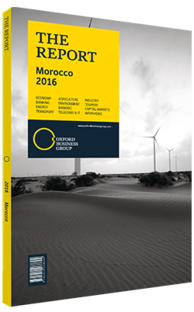New seed varieties improve agriculture sector's resilience in Morocco
Agriculture in Morocco has undergone a significant transformation since the launch of the Green Morocco Plan (Plan Maroc Vert, PMV) in 2008, including a rise in value and volume of agricultural production. This is due to investment and research to diversify varieties and adapt to climate change.
Drought, depleting water resources, desertification and soil erosion are all widely acknowledged challenges for Morocco. The latest droughts, for instance, which occurred between November 2015 and February 2016, are likely to see cereal output decline by 70% in volume in 2016. However, Aziz Abdelali, general director of the National Office of Cereals and Legumes, told OBG that the decline would have been more pronounced should this episode of drought have occurred prior to the PMV.
Diversifying Varieties
Indeed, recent investments – primarily led by Morocco’s National Institute of Agricultural Research (Institut National de Recherche Agronomique, INRA) – have come to play a major role in developing drought-tolerant varieties in the cereal segment, which remains highly contingent on rainfall. Today, INRA varieties have come to account for 70% of planted areas in this segment.
In line with the goals outlined for each segment under the PMV, INRA has come to play an integral role, forming partnerships with international collaborators as well as the government, in studying the effects of climate change to foster a more resilient environment for agriculture. The institute has more than 60,000 different seed varieties under its belt.
In addition to cereals, other segments benefitting from these advancements include olives, citrus and dates. In the case of the latter, a new variety resistant to Bayoud disease, a fungal disease affecting date palm, has been developed, helping grow the average annual output of dates from 49,000 tonnes between 2000 and 2007, to over 95,000 tonnes between 2008 and 2015, according to local press reports.
Fertiliser Market
In addition, fertilisers tailored to different crop and soil varieties constitute another substantial advancement in the research sphere. Largely developed by Moroccan phosphate producer OCP S.A., which in 2014 supplied the market with 500,000 tonnes of fertilisers, consumption in Morocco currently stands at around 900,000 tonnes. The goal under the PMV is to bring this figure to reach a total of 2m tonnes by 2020.
In a bid to promote efficient and rational usage, the Ministry of Agriculture and Fisheries, in collaboration with INRA and OCP, is devising a national soil fertility map to help farmers gauge their needs in terms of fertilisers and water resources.
Inform & Educate
To help farmers boost productivity and value added, in 2013 the government set up the National Office of Agricultural Counselling (Office National du Conseil Agricole, ONCA). Offering one-on-one and communal advisory services, ONCA is also seeking to disseminate environmentally friendly practices among farmers. According to Soufiane Larguet, director of strategy and statistics at the Ministry of Agriculture and Fisheries, a discussion about agricultural wastes and recycling is increasingly gaining momentum, with a first agreement signed in 2015 to recycle and add value to olive mill wastes.
According to Rachid Dahan, secretary general of INRA, Morocco has made significant progress in securing sufficient funding to cover investment and operating expenditure in agricultural research. However, recent years have seen the allocated budget as a percentage of the gross value of agricultural production (GVAP) decline. “The research budget currently represents just 0.64% of GVAP, which is consistent with investment in low- to middle-income countries, but below the global average of 0.9% and the average in high-income countries, where it’s around 2.3%. In Morocco, the contribution of national research to GDP accounts for less than 1%,” he told OBG.
You have reached the limit of premium articles you can view for free.
Choose from the options below to purchase print or digital editions of our Reports. You can also purchase a website subscription giving you unlimited access to all of our Reports online for 12 months.
If you have already purchased this Report or have a website subscription, please login to continue.

